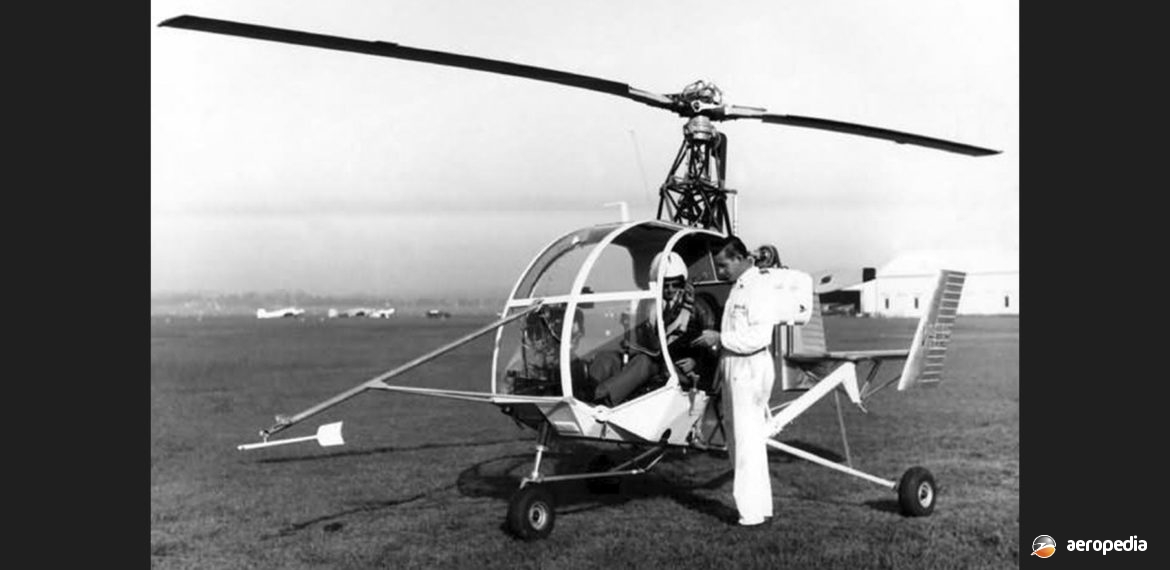Photograph:
Victa R-101 Gyroplane VH-MVB at Camden, NSW during early testing (Ray Watkins Collection)
Country of origin:
Australia
Description:
Two-seat gyroplane
Power Plant:
One 112 kw (150 hp) Continental IO-346-A four-cylinder horizontally-opposed air-cooled engine
Specifications:
- Rotor diameter: 8.23 m (27 ft)
- Max speed: 115 km/h (90 mph)
- Cruising speed: 132 km/h (82 mph)
- Minimum speed 32 to 40 km/h: (20 to 25 mph)
- Empty weight: 386 kg (850 lb)
- Loaded weight: 635 kg (1,400 lb)
History:
In early 1960 Victa Consolidated Industries set up what was known as a ‘rotating-wing group’ to consider the construction of a rotary wing aircraft. One aircraft was built and this, the prototype, became variously known as the “Project 67A’, the “R-101”, and the “Gyroplane’.
The machine was designed as a two-seat gyroplane which would be simple and cheap to operate for a variety of duties. It was flown for the first time on 3 May 1961, and development continued until 1964 with the object of producing an aircraft to meet American FAA requirements. However, production plans were eventually cancelled so that the Company’s time and energy could be directed to the Victa Airtourer, and proposed later Aircruiser.
Some reports state that the power was initially to be supplied by an 86 kw (115 hp) Lycoming four-cylinder engine, and production aircraft were to be fitted with a 112 kw (150 hp) Lycoming engine, but in the event a Continental IO-346-A of similar power was fitted during the flight test program of the Gyroplane.
Of conventional all-metal construction, the R-101 had a pod-and-boom layout, with the engine being mounted in the pusher configuration and an “H”-type tail fitted. It had a non-retractable undercarriage and a two-blade rotor was specially designed, using the ‘see-saw’ configuration rather than the flapping type. A belt-drive spin-up gear was fitted for the rotor to assist in the short take-off ability. Accommodation was provided for two persons side-by-side.
The machine was finished in natural metal and carried the registration VH-MVB on the tail. Type testing was never completed and the registration was only used as a call-sign. Eventually the Gyroplane was retired and obtained by the Camden Museum of Aviation, NSW, where it was placed on display, later being taken to the museum’s newer premises at Narellan where it remains, only a short distance from where test flying was performed.

